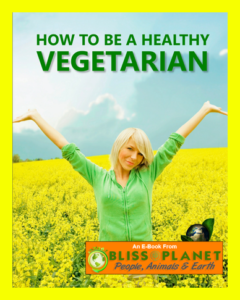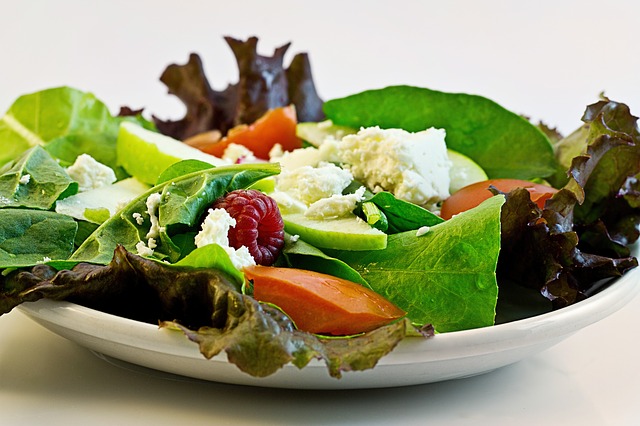Vegetarianism is becoming more and more popular as people recognize the health benefits of a plant-based diet. However, after years of a vegetarian (mostly vegan) lifestyle, I’ve come to realize that many people are unclear as to what, or how, to feed a vegetarian. Perhaps you have found yourself in a situation where a vegetarian has entered your life and your ideas about what to feed them are limited. If vegetarianism is new to you, you may need some support in understanding what to feed them. On behalf of vegetarians everywhere, allow me to clear a few things up so that you don’t need to stress out if one is coming to your house for dinner. By the end of this article you will understand the types of vegetarians, some myths about vegetarians, and some easy methods of feeding them.
First of all, let’s start with some definitions:
Vegetarian – a person who, for whatever reason, chooses not to eat meat. It is best to clarify which type of vegetarian your guest is, before planning the menu. A person may be any of the following types of vegetarians or a combination of two or three!
Ethical Vegetarian – this person has chosen not to eat meat because they feel it is unethical. Depending on the personality of your vegetarian, it may be best that there is no meat on the table. Some ethical vegetarians find the sight of meat (especially something like a rare piece of beef) to be repulsive and it may ruin their appetite.
Health-Conscious Vegetarian – this vegetarian is conscious of what they eat because they recognize food as a source of nutrition to keep the body healthy. They may grow some organic vegetables at home, participate in healthy activities, and generally live a healthy lifestyle. This doesn’t necessarily mean that they won’t enjoy a nice glass of wine with dinner so don’t assume that is the case. Always ask.
Junk-Food Vegetarian – The junk food vegetarian is often a person who became a vegetarian as a youth, teen, or young adult, usually for ethical reasons, and without any concern for nutrition at all. They may eat a lot of pizza, pasta, doughnuts, candy, soft drinks and the like. This type of vegetarian may not even like most vegetables. They most likely do not refer to themselves as a “Junk-Food Vegetarian” so tread softly when inquiring.
Vegan – a vegan is a vegetarian who not only excludes meat but also any animal products (including milk, cheese, eggs, and sometimes even honey) from their diet. Some vegans are strict with this and will not eat bread that has been made with an egg or some milk. Others are more flexible; choosing to be vegan at home and as close to vegan as they can get when they are out. I’m mostly vegan at home, but I’d rather be vegetarian than hungry if I’m out.
Flexitarian – this person prefers a vegetarian diet but may occasionally eat a small amount of meat.
Pescatarian – from the Spanish pescado (fish), this person will sometimes eat fish and/or seafood.
Lacto-Ovo Vegetarian -dairy products and eggs are eaten, but not meat.
Raw Food Vegetarian – a raw foodist chooses to eat a vegetarian diet that is uncooked. There are many health benefits to eating raw plants since cooking destroys many valuable enzymes. If you have a raw foodist coming over and you don’t have a raw food “cook”book, plan on a robust salad. (See below)
Macrobiotic – is a type of vegetarian with a very specific and healthy diet. It is best to ask them for some suggestions or to research recipes on the internet.
In general, the best way to feed your vegetarian is to simply ask them what they eat. I always appreciate when we have been invited to dinner at someone’s house and they ask if I eat this or that. It means a lot when someone goes through the trouble of setting aside a portion for me before they add the meat part of the recipe. And sometimes that’s all it takes; if you’re making pasta, take some sauce out of the pan before adding the meat. The same goes for a salad that might have bacon, eggs, or cheese in it – depending on your vegetarian. Feeding a vegetarian is easier than you think; you may just need to make a few small changes to your recipes and get beyond some of the myths about vegetarians.
Here are a few common myths about vegetarians:
Myth #1: Vegetarians only eat salad and tofu.
While most vegetarians do enjoy salad, and some enjoy tofu; that is not all that we eat. If you are planning to feed a vegetarian only salad, it needs to be more than iceberg lettuce, cucumbers, tomatoes, and carrots. More on that in the recipe section at the end of the article. Some vegetarians, myself included, are not fans of soy products such as tofu, and may not eat it at all.
Myth #2: Vegetarians don’t eat meat.
This part is actually true but I put it here because most people don’t realize that vegetarians don’t simply eliminate an entire food group from our diets… we replace the meat with other foods. If your entrée consists of lasagna with meat sauce, don’t assume that the side salad and peas will be enough food for your vegetarian guest. Leave the meat out of the sauce. Do not expect a vegetarian to pick the meat out of a dish. Replace the meat entrée with something of substance like beans and rice or a hearty vegetable dish like stuffed squash, peppers, or tomatoes. If you’re serving burgers as your main course, you are probably going to have a hungry dinner guest if you don’t have anything of substance to replace it.
Myth #3: Pasta is a good solution.
Pasta will suffice for one or two meals, but if this vegetarian is going to be eating at your table on a somewhat regular basis, pasta is going to get old fast; as will pizza. Many vegetarians choose this lifestyle for the health benefits gained from eating plants and eating pasta and pizza will not provide these health benefits. If your vegetarian is an ethical vegetarian, they may have no concerns about nutrition and pizza and pasta will work just fine for them. Remember to ask, but keep in mind that you can’t have a vegetarian without the “veg”!
No vegetarian wants to be imposing. It is easy to make them feel welcome and it is always exciting to try new recipes.
Here are a few recipes to help you to feed your vegetarian – and possibly yourself!
Patti’s Portobello Perfecto
Bursting with flavor and texture, this recipe often satisfies a steak-eater too!
4 Portobello Mushroom Caps (more or less)
All Natural Hummus – flavor of choice (40 spices is my favorite)
All Natural – Sun-dried tomatoes (without preservative) or Shredded Carrots or Salsa or Bruschetta
Olive oil
Balsamic Vinegar
Roasted Garlic
Fresh Basil
Brown Rice (to serve as bed)
350° F Oven – 15 to 20 minutes or until mushrooms soften (become tender) when poked with a fork
Cook brown rice separately.
Wash mushroom caps. Pat dry with clean towel or paper towel.
Lightly brush tops of caps with olive oil and place top-down on a glass, stone or other baking dish.
Pour 1-2 tsp. balsamic vinegar into/over each cap.
Spoon hummus to cover inside of caps about ¼ inch deep and spread with fork.
Add ½ tsp. roasted garlic to each cap and spread with fork.
Add sun-dried tomatoes or shredded carrots or salsa or bruschetta to cover.
350° F Oven – 15 to 20 minutes or until mushrooms soften when poked with a fork
Remove from oven and serve over a bed of brown rice.
Cover top with fresh basil.
These caps are succulent and juicy and the bed of rice serves to catch all the wonderful juices that will escape. Simply divine!
Crazy Tater Feast
This is a simple meal that you can even pack for lunch!
Wash potatoes and leave skins on, bake until soft
You can bake the potatoes in advance (say you are cooking something else in the oven, throw some potatoes in there) and store them in the fridge.
When ready to serve…
Slice or cut potatoes in an oven-safe dish.
Top with hummus (all natural, flavor of choice), salsa and black beans.
Sprinkle with sweet corn (frozen or other)
Heat in 300°F oven and serve
If potatoes are already hot from baking, there’s no need to warm the toppings but you can pop them back into the oven to take the chill off.
These are delicious, high in fiber and filling!
Hearty Salad
Full of color, flavor, and texture, this salad is sure to satisfy!
Mixed greens
Cucumbers
Shredded carrots
Sliced cherry tomatoes
Red cabbage, chopped
Sliced bell peppers (yellow, red, or green)
Canned chickpeas/garbanzo beans, drained and rinsed (or kidney beans, or black beans)
Frozen corn (rinse with cool water to thaw)
Frozen peas (rinse with cool water to thaw)
Black olives, sliced
Red onion, chopped
Slivered almonds (or sunflower seeds, or other nut/seeds)
Chopped roasted garlic (from a jar)
Raisins (or golden raisins, or dried cranberries)
All-natural dressing (on the side)
In a large salad bowl (or individual salad bowls), fill half the bowl with mixed greens. Add sliced cucumber, shredded carrots, sliced cherry tomatoes, red cabbage and peppers. Then add chickpeas, thawed corn, thawed peas, sliced olives, and chopped red onion. Sprinkle with nuts, add ¼ teaspoon of chopped, roasted garlic per serving, and sprinkle with raisins. For your dressing, choose an all-natural version or possibly extra virgin olive oil and balsamic vinegar.
Having a vegetarian at your table should not be daunting. Don’t be afraid to ask them if they will eat something before you plan your menu. Simple steps like leaving the meat ingredient out of a casserole, salad, sauce, or dish may be all you need to do. When all else fails, think Mexican! Rice and beans with some sautéed vegetables is sure to satisfy your vegetarian guest!
Here is a wonderful resource for Vegan and Vegetarian Diets
How To Be A Healthy Vegetarian







